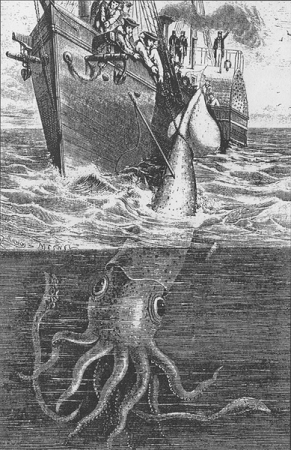600621 keeping tabs.png

The Alecton attempts to capture a giant squid off Tenerife in 1861. Illustration from Henry Lee's Sea Monsters Unmasked, London, 1884. Credit: Henry Lee- public domain
The giant squid is one of the biggest animals in the oceans. A typical adult is 35 or 40 feet long, and some are even bigger. Yet it’s almost never seen. Much of what we know about the creature comes from dead ones that washed up on shore. Only a few have been photographed alive and well in the oceans.
In 2018, though, a research team easily detected the giant squid’s presence in the Sea of Japan -- through molecules of its DNA in the water. The technique could help scientists keep tabs on the squid population throughout the world.
In fact, eDNA -- “e” for “environmental” -- could help keep tabs on just about all marine life. Every organism sheds bits of DNA -- through its wastes or dead skin cells, for example. Marine scientists could scoop up a bucket of water from anywhere, then test it against a library of genetic “barcodes” for the DNA of just about any creature they could think of -- like a cashier checking out an order of groceries.
E-DNA could be used to monitor the populations of fisheries, track endangered species, determine the impacts of oil spills and other environmental problems, and much more. A recent test in the waters off New Jersey found there was a good match between the species caught in nets and those identified through their DNA in the water. And as technology matures, the match is expected to get even better. That will allow scientists to keep their “eyes” on animals throughout the world’s oceans -- even the elusive giant squid.

